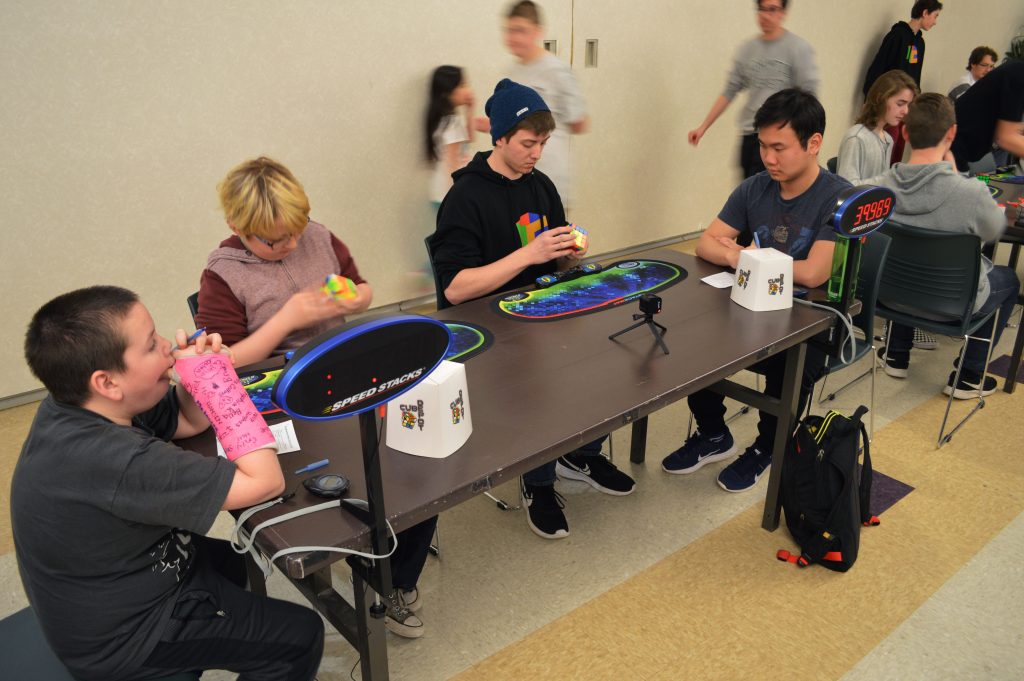
Old Union Hall filled up on Saturday, all for one toy. While the Rubik’s cube may just be a neat puzzle to some people, the speed-cubing community sees it as much more.
Binghamton Winter Cube Day drew an international crowd, though the majority of attendees were not Binghamton University students. The event featured six different competitions including 2x2x2, 4x4x4 and 3x3x3 one-handed — the event names correspond to the number of squares across each Rubik’s cube used.
Zachary Goldman, the organizer of the event and a junior majoring in environmental studies, placed fifth in the 7x7x7 combined final, but explained victory is not necessarily the point.
“It’s a friendly community, nobody is really mean to each other and we help each other out when we can,” Goldman said. “Nobody’s trying to beat anyone else, we learn a lot from each other.”
The event highlighted that community feel, as attendees congratulated one another on achieving personal records. Thirteen-year-old participant James Southcott said this was his first cubing event.
“It’s a one-man thing, you’re not competing against others and you always want to see people do better,” Southcott said. “There’s a lot of new people every time and we cheer each other on.”
While competitors like Southcott appreciated the challenge, others are just as glad to be a part of the community. Corey Sakowski, World Cube Association delegate and a staff member at Binghamton’s Cube Day, cites his cubing friends as driving his involvement in the community.
“I wouldn’t be so motivated to practice and go to competitions if I didn’t make so many friends through this,” Sakowski said. “Ninety-five percent of people walk in knowing they’re not going to win, it’s more important for people to beat their own personal goals.”
Cube Day brought a variety of people, including parents filming their children solving cubes and students trying to beat personal records. Meanwhile, passionate cubers helped to run the whole event.
When talking to cubers, there was a commonality to how they picked up the hobby: with help from someone else.
“My brother learned how to solve it first and that was back in 2008,” Sakowski said. “He didn’t get really into it but I got pretty much hooked on it since then.”
Similarly, Eric Zhao, a 20-year-old who traveled from New York City, also said his interest in cubing came from someone close to him.
“When I was in middle school, my friend had a cube and seeing him do it made me want to solve it,” Zhao said.
The internet has aided the rise of cubing because it provides the opportunity for cubers to receive recognition for their accomplishments and to connect with other cubers. A 2016 YouTube clip of cuber Feliks Zemdegs, for example, has amassed 2.4 million views, and anyone with an interest in the activity has an array of resources online to reach such mastery.
According to Goldman, this was the first cubing event held at BU, and while nothing is set in stone, Goldman said he hopes the event can return to campus.
“Seeing as the competition was a success, there will probably be another one in the future,” Goldman said.


